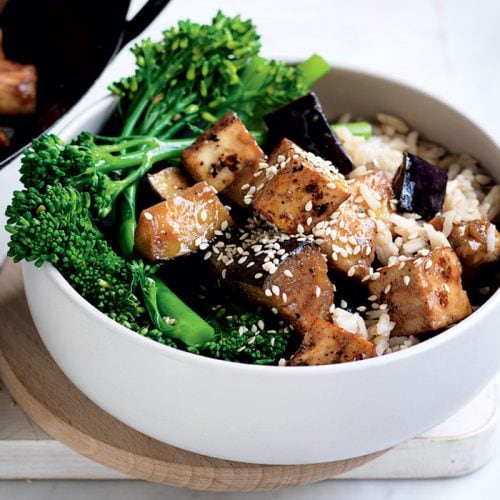
Inflammation is the body’s natural immune response to injury and infection, so a bit of swelling is not usually a big deal. But what happens when it doesn’t go away? Or when we can’t see it? HFG investigates ways to reduce chronic inflammation.
The human body comes equipped with the most amazing immune system that gives it the ability to heal itself from everyday ailments. Get bitten by a mosquito or twist an ankle and you’ll notice a bit of swelling as blood flow increases to the area so that infection-fighting cells and nutrients can help with repair. A similar response happens when you get an infection, cold or the flu. While you may notice symptoms such as a runny nose, redness, swelling and pain, these all subside before too long as you heal.
But sometimes inflammation doesn’t end when it is supposed to, and the body doesn’t return to its usual healthy state. Instead, the swelling stays around in a low-grade, ongoing or chronic form. This type of inflammation is cause for concern.
Chronic inflammation effects
When you experience chronic, low-grade or ‘silent’ inflammation, the body’s continued release of inflammatory chemicals can destroy healthy cells in your arteries, organs, joints and other areas, causing disease. Since this is all happening inside your body, rather than on the surface where it can be seen, this type of inflammation is often undetectable. Unfortunately, it can cause irreversible damage long before anyone is aware that something is wrong.
Auto-immune conditions such as rheumatoid arthritis and Crohn’s disease are classic examples of inflammation gone wrong. In these instances, the immune system starts attacking healthy cells, tissue and/or organs, instead of damaged ones. In fact, chronic low-grade inflammation is linked to a range of conditions, including heart disease, stroke, cancer and diabetes, as well as osteoporosis, osteoarthritis and neurodegenerative conditions such as Alzheimer’s and Parkinson’s.
What you can do about chronic inflammation
The good news is that you can control or reduce low-grade inflammation through the foods you choose to eat, as well as by making a few lifestyle changes.
Foods that have been shown to reduce inflammation include those high in omega-3 fats, monounsaturated fats, fibre and phytonutrients (compounds that are found in plant food).
Concentrating on a diet that emphasises plant-based foods — fruit, veg, legumes, nuts, seeds — along with some fish and other seafood will help reverse the inflammatory process.
On the other hand, a diet high in saturated fats (found in red meat, butter cheese), trans fat (in takeaways, store-bought baked goods) and processed carbs (foods made from white flour and refined sugar), while being low in fresh fruit and vegetables, can promote inflammation.
As well as paying attention to what you eat, take note of how you cook your food and the way you store it, too. Where possible, store food in glass containers and avoid reheating food in plastic containers, regardless of whether the packaging says you can. Avoid charring or burning food, especially when barbecuing meats and toasting bread.
As for lifestyle, managing stress, getting enough sleep, exercising daily and avoiding environmental toxins such as pollution, cigarette smoke and insect sprays, can also help to reduce low-grade inflammation
5 foods to fight inflammation
1 Fresh fruit and vegetables
An overwhelming number of studies demonstrate the valuable contribution vegetables play in the promotion of good health and disease prevention. Yet most people continue to fall short of eating the amount that would benefit them. The recommended intake is five serves of vegetables a day and two serves of fruit a day. Fruit and veg are a good source of phytonutrients that have beneficial anti-inflammatory and antioxidant effects. Always aim to eat a varied selection because the more colours you consume, the more nutrients you receive.
2 Legumes and whole grains
High-GI foods (carbohydrates that are broken down quickly) spike blood sugar levels, which in turn spike insulin levels. And both high sugar and high insulin levels can encourage inflammation. Legumes and whole grains, however, are a nutrient-rich, low-GI source of carbohydrates, so they keep blood sugar and insulin levels low. They also provide a range of fibre, which is good for gut bacteria. Given that at least 70 per cent of the immune system is located on the lining of the gut, you want to take care of these important gut bugs.
3 Fish and seafood
As well as protein, iron, zinc, selenium and iodine, fish and seafood are well-known sources of the powerfully anti-inflammatory omega-3 fats. These essential fatty acids cannot be made by the body so need to be included in your diet. Aim to eat oily fish and seafood at least three times a week to get your required intake (see p28). If you don’t eat seafood, opt for plant-based omega-3 sources like tofu, walnuts and flaxseeds.
4 Herbs and spices
The most potent anti-inflammatory food in nature is turmeric, so be liberal when cooking with this spice and team it with black pepper to boost absorption. All spices and herbs — fresh or dry — are incredibly valuable sources of antioxidants. As well as being aromatic and making dishes smell and taste delicious, they also reduce the need for salt. Think ginger, garlic, cinnamon, nutmeg, basil, coriander, cumin, oregano, rosemary, parsley, chives, cloves and so much more.
5 Healthy fats
Where ever possible, swap out the butter with extra-virgin olive oil when you cook and prepare meals. This healthy monounsaturated fat is the main fat source of the world-renowned healthy Mediterranean diet, and for good reason too, since it’s an excellent source of beneficial antioxidants and other anti-inflammatory agents. The label ‘extra-virgin’ is the highest grade available for olive oil and means the oil comes from the first pressing of the olives.
Other healthy monounsaturated fats good for reducing inflammation are avocados, nuts and seeds. These plant foods have important vitamins, minerals, fibre and phytonutrients with antioxidant benefits.
How eating the rainbow can reduce inflammation
Boost your intake of phytonutrients, which can reduce inflammation, by eating a wide selection of fruit and veg from these five main food colour groups every day.
Purple
- Eggplant
- Red cabbage
- Beetroot
- Black beans
- Plums
- Blueberries
- Blackcurrants
- Blackberries
- Figs
- Grapes
Red
- Tomatoes
- Radish
- Strawberries
- Raspberries
- Red apples
- Pomegranates
- Cranberries
- Cherries
- Guava
Green
- Spinach
- Watercress
- Lettuce
- Kale
- Collard greens
- Green peppers
- Zucchinis
- Broccoli
- Brussels sprouts
- Green beans
- Green tea
White
- Mushrooms
- Parsnip
- Cauliflower
- Garlic
- Onions
- Turnips
- Horseradish
- White beans
- Black-eye peas
Orange
- Sweet potatoes
- Squash
- Corn
- Carrots
- Oranges
- Tangerines
- Lemons
- Passionfruit
- Papaya
- Rockmelon
How to get your omega-3s
The recommended daily intake of omega-3 fatty acids is 500mg. This figure combines the two key omega-3s in fish and seafood, know as EPA and DHA. If you don’t eat fish and seafood, omega-3s are available as ALAs from plant foods.
Here are some good sources for improving your intake.
Fresh fish
| EOA/DHA | Fresh fish and seafood (150g raw weight serve) |
|---|---|
| >500mg | Mackerel, salmon, sardines, rainbow trout, bream |
| 300—400mg | Snapper, flounder, small-spotted herring, blue-eye trevalla, tuna |
| 200—300mg | Bass, king dory, wrasse, flathead |
Canned fish
| EPA/DHA | Canned fish (100g serve) |
|---|---|
| >1500mg | Canned sardines, some varieties of canned salmon |
| 500—1500mg | Some varieties of canned salmon, canned tuna, smoked mussels, anchovies, Atlantic pickled herring, smoked oysters |
| 300—500mg | Flavoured salmon and tuna |
Seafood
| EPA/DHA | Seafood (100g serve) |
|---|---|
| 500—1000mg | Green mussels, blue mussels |
| 300—500mg | Squid or calamari, raw oysters |
| <300mg | Scallops, prawns, octopus, crab, lobster or crayfish |
Plant sources
| Food | Serving size | ALA mg per serve |
|---|---|---|
| Walnuts | 30g | 1,884 |
| Pecan nuts | 30g | 186 |
| Hazelnuts | 30g | 36 |
| Tahini | 30g | 36 |
| Linseeds (flaxseeds) | 1 tsp (4g) | 922 |
| Chia seeds | 1 tsp (4g) | 716 |
| Flaxseed oil | 1 tsp (5ml) | 2400 |
| Tofu (firm) | 200g | 1000 |
8 foods that may contribute to inflammation
- Trans fatty acids, which appear in the ingredients list of processed foods as ‘partially hydrogenated’ oils
- Deep-fried fast foods
- Processed meats and grain-fed meat
- Foods with a high saturated fat content, such as fatty cuts of meat and skin on chicken
- Refined and processed foods such as readymade or store-bought meals
- High-GI foods such as white bread, jasmine rice, pastries, biscuits, cakes and other refined sugary foods.
- Alcohol, including red wine in large amounts
- Foods containing additives such as preservatives, emulsifiers, stabilisers, colourings and flavourings.
The bottom line
Chronic or low-grade inflammation can be helped by a diet rich in plant-based foods and a regular source of omega-3 fatty acids, while limiting foods that can contribute to inflammation such as trans fats. It’s good to be mindful of making better food and lifestyle choices but, remember, it’s what you eat and do most of the time that has the biggest effect on your health.
Article sources and references
- Abdul Q et al. 2017. Epigenetic modifications of gene expression by lifestyle and environment. Arc Phar Rrch. 40(11): 1219–1237.https://pubmed.ncbi.nlm.nih.gov/29043603/
- Adashek J et al. 2020. A pilot study on the effects of nutrition consumption on cardiovascular biomarkers. Cureus. 12(6): e8798https://pubmed.ncbi.nlm.nih.gov/32742827/
- Calder PC et al. 2009. Inflammatory disease processes and interactions with nutrition. Br J Nutr. 101(1): S1–S45.https://pubmed.ncbi.nlm.nih.gov/19586558/
- Cavicchia P et al. 2009. A new dietary inflammatory index predicts interval changes in serum high-sensitivity C-reactive protein. J Nutr. 139(12): 2365–2372. https://pubmed.ncbi.nlm.nih.gov/19864399/
- Giugliano D et al. 2006. Effects of diet on inflammation: emphasis on the metabolic syndrome. J Am Coll Car. 48(4): 677–685.https://pubmed.ncbi.nlm.nih.gov/16904534/
- Hardman W. 2014. Diet components can suppress inflammation and reduce cancer risk. Nutr Res Pract. 8(3): 233.https://pubmed.ncbi.nlm.nih.gov/24944766/
- Heart Foundation. 2015. Sources of omega 3. Accessed Dec 2020.https://www.heartfoundation.org.au/getmedia/4adbe011-db9a-4777-8a99-db6365e27cb1/Consumer_QA_Fish_Omega3_Cardiovascular_Health.pdf
- Hunter P. 2012. The inflammation theory of disease. EMBO. 13(11): 968–970. https://www.ncbi.nlm.nih.gov/pmc/articles/PMC3492709/
- Lawrence S & Gilroy D. 2007. Chronic inflammation: a failure of resolution? Intl J Exper Path. 88(2): 85–94. https://www.ncbi.nlm.nih.gov/pmc/articles/PMC2517296/
- Lucas A. 2012. Atherosclerosis, cancer, wound healing, and inflammation—shared or parallel evolution. J Clin Exp Car. 3(5): e107.https://www.longdom.org/open-access/atherosclerosis-cancer-wound-healing-and-inflammation-shared-or-parallel-evolution-2155-9880.1000e107.pdf
- Rodriguez-Hernandez H et al. 2013. Obesity and inflammation: epidemiology, risk factors, and markers of inflammation. Int J Endo. 2013: 678159.https://www.ncbi.nlm.nih.gov/pmc/articles/PMC3652163/
- hivappa N et al. 2014. Designing and developing a literature-derived, population-based dietary inflammatory index. Pub H Nutr. 17(8): 1689–1696. https://pubmed.ncbi.nlm.nih.gov/23941862/
www.healthyfood.com










